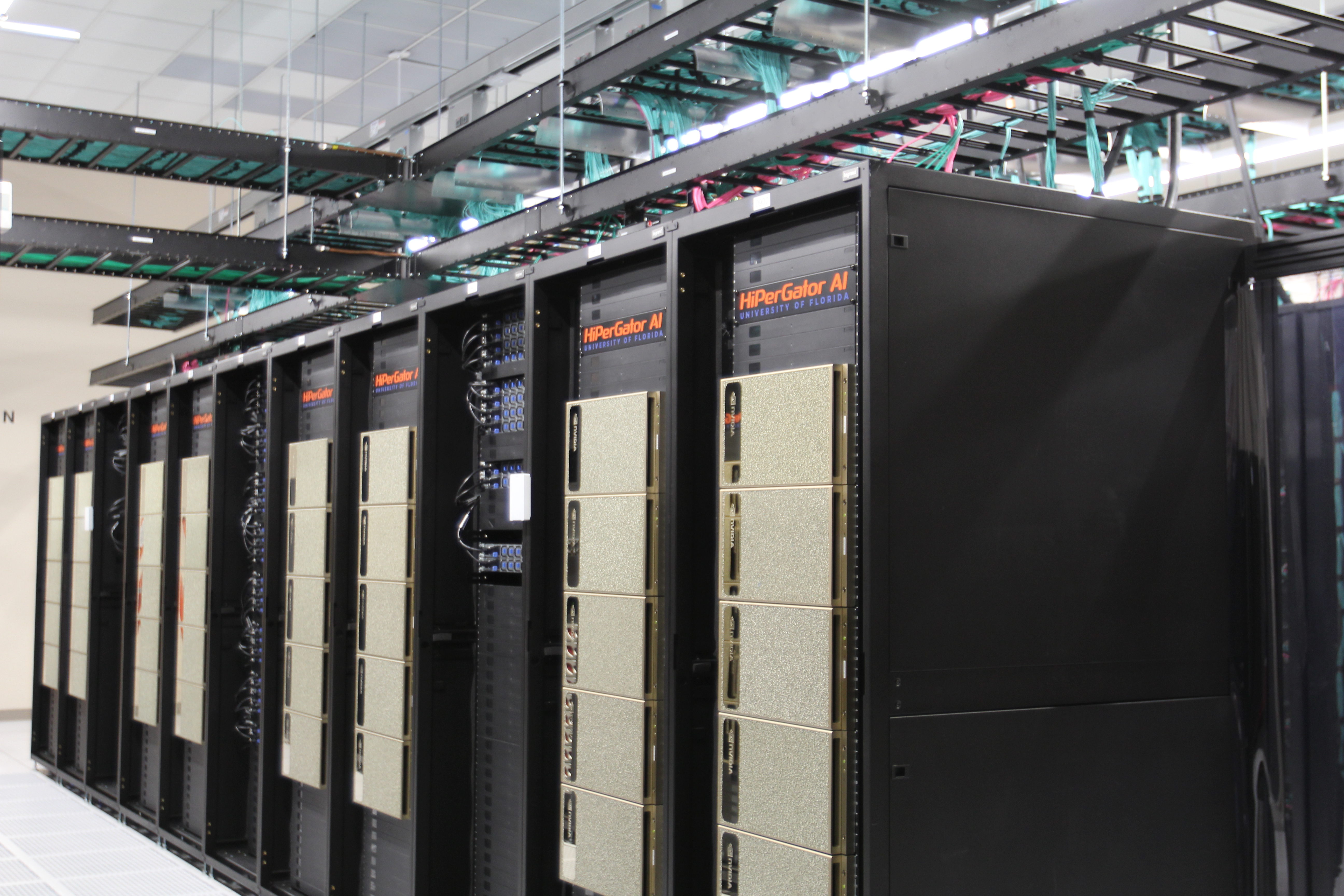How scientists are using UF's supercomputer

HiPerGator supercomputer at UF.
From detecting crop diseases and pests to analyzing decades of hand-written doctor’s notes and medical records, the University of Florida’s supercomputer, known as HiPerGator, is helping researchers push the limits of science.
HiPerGator is being put through the paces on more than 800 research projects across all 16 of UF’s colleges, accelerating impactful work that might have previously been unfeasible or even impossible. Built with $50 million in support from UF alumnus Chris Malachowsky and tech company NVIDIA, which he co-founded, the machine is one of the fastest AI supercomputers in academia.
The machine also helped kickstart UF’s larger push to become the country’s first AI University, integrating AI across all areas of university research, teaching and operations and adding 110 AI-focused faculty to help integrate AI across curriculum.
“HiPerGator’s world-class capabilities are profoundly impacting research and training efforts throughout the Southeast,” Malachowsky said. “Faculty and students now have a powerful time machine to accelerate knowledge and discovery, and to prepare for a world that increasingly benefits from the transformative powers of AI.”
Available to all State University System of Florida and Southeastern Conference institutions, researchers use HiPerGator to work on projects spanning agriculture, engineering, health, law and communications, among others.
GatorTron™, a project developed in partnership with NVIDIA, is one of the most ambitious uses of HiPerGator. Analyzing decades of medical records that had been stripped of personally identifying information, UF Health researchers trained supercomputers to generate billions of simulated medical records and generate a new medical AI tool, GatorTronGPT, that functions similarly to ChatGPT. The new artificial intelligence computer program can generate doctors’ notes so well that physicians couldn’t tell the difference, according to an early study.
Researchers in UF/IFAS are also using the supercomputer for projects to detect plant diseases and pests, increase crop productivity, save water, control weeds, or detect ripe fruit, which will lead to new, efficient, and sustainable ways to feed the world.
“Our researchers are tackling big problems using HiPerGator, and their work is making our world a better place,” said Scott Angle, UF provost.
At the Florida Museum of Natural History, researchers are using HiPerGator to identify patterns in nature that would otherwise be impossible to detect, such as when and where certain butterflies originated. The supercomputer is also being used to track Florida’s mosquito-borne viruses and trace the evolutionary history and diversity of plants.
HiPerGator is also an effective teaching tool, with more than 300 instructors from across Florida’s 12 public universities introducing students to the possibilities of AI and its applications across fields, said Erik Deumens, UF research computing senior director.
“The powers of HiPerGator are two-fold: We are pushing the limits of modern research while also training the next generation to build on the groundbreaking work that’s being done now,” said Deumens. “In the coming years, we’re going to be solving problems and breaking barriers at a faster rate than ever before.”
